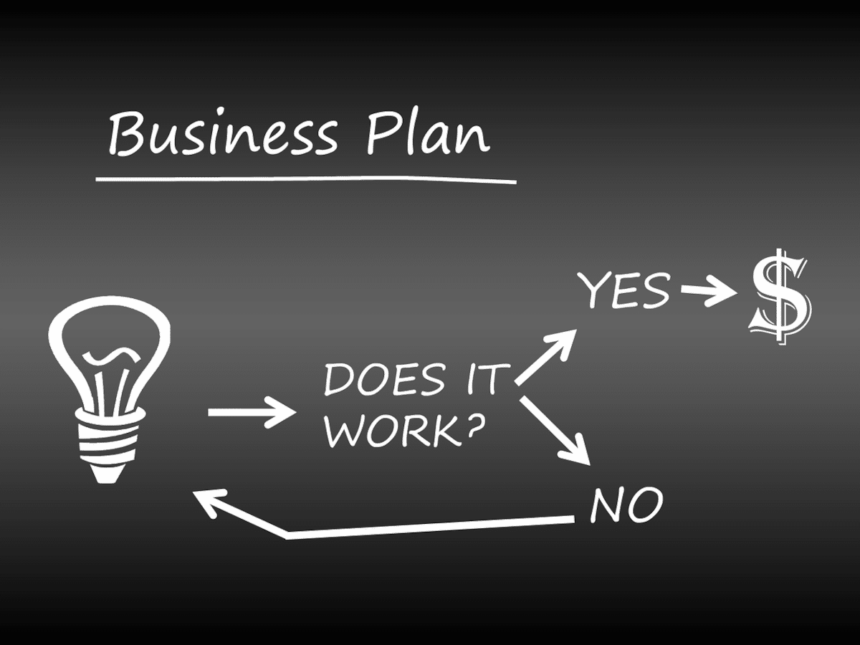A Good Business Plan is essential for the success of any business. It would be best to have a business plan to convince investors to invest in your business idea. In other words, a Business Plan is a laid-out procedure of how the business is to be run.
After coming up with a business idea and collecting all the necessary information, you will have to put the ideas down on paper in a business plan. Writing a business plan is usually the first step when setting up a business.
Although some entrepreneurs have succeeded without one, many have failed because they did not have a business plan. But how do you write a good business plan?
This article has outlined the features of a good business plan and what the business plan should contain. It has details of how you should arrange content in a business plan. Therefore, you should read through it.
Qualities of a good business plan
A good business plan should have the following qualities:
1. It should be short
The purpose of every business plan is to be read. No one will read and analyze more than five hundred business plan pages. Many investors do not have time to read through many stories in a business plan. Therefore, you should be precise and brief in your business plan.
Also, a business plan is a tool that will require modification as time goes by. A voluminous business plan modifies a difficult task, and you might end up operating against your business plan.
2. Should be friendly to the audience
When writing a business plan, use a language your audience can understand. Use simple language instead of technical terminologies for cases where a potential investor is not an expert in your area of interest.
You are accommodating your investors, and keeping your product descriptions short and precise increases the chances of receiving the funds you need.
3. It should not make you feel intimidated
Many entrepreneurs and investors learn as they grow in business. Most successful business persons don’t even have a degree in business-related courses. Therefore, writing your business plan should not make you feel intimidated.
As long as you are passionate about your business idea, writing a plan on how you plan to grow should not be too hard to handle.
It would be best to write a simple one-page business plan (A lean plan). Once you have a lean plan, you can develop it later.
Now that you have known the features of a good business plan, it is time to look at what a business plan should have as content. Content is critical in determining whether your plan will be approved or trashed. The following are aspects that you should include in your business plan content.
Things to include in your business plan
1. Executive summary
This section gives an overview of your business plan. It should take one to two pages and be the first part of your business plan. However, some people write it as last, but the overview should give the reader what to expect.
2. Opportunity
In this segment, you give details of the product you want to deal with and the need of consumers that you seek to solve. This section analyzes the competition in the market you want to venture into and the target market for your product.
3. Execution
This is the third segment of your Business plan. Here, you must explain how you will use the opportunity.
In this section, you are supposed to give details of your sales and marketing plan, operations, and the criteria to measure success.
4. Team or company
Most investors look for not only good ideas but also good teams. In this section, you are required to give details of your team. Talk about the team you already have and those you need to employ.
You will also be required to provide your legal structure and location. If your company is already up and running, a history of previous businesses.
5. Financial Plan
No business plan is complete without a financial plan. A financial plan gives details about how money is utilized in the business. In this chapter, you are supposed to provide details on sales, profit and loss statements, personnel plans, cash flow statements, Balance sheets, and an exit strategy.
In a business plan, this section is one that many entrepreneurs find challenging, but investors will look keenly. Investors will pay much attention to the financial plan because they need to know how to spend their money and return it.
A typical business plan usually has a monthly projection for the first 12 months and an annual projection for at least the next five years. Although a Three-year forecast is enough, some investors will demand a full five-year forecast.
The following is an overview of details you should include in the Financials Plan of your business plan.
6. Sales forecast
A sales forecast is simply the projection of sales to be made over the next few years. Typically, a sales forecast is broken down into various rows, with each row offering a specific core product or service.
A sales forecast should also have corresponding rows showing the Cost Of Goods Sold. (COGS). The COGS is strictly the amount used to provide goods sold and not additional expenses such as rent and transport.
7. Personnel plan
Your personnel plan contains details of money spent on employees. All posts can be listed for a small business with the amount paid to each employee stated against the positions. The Personnel plan is divided into small sections for massive companies, such as sales and marketing.
The personnel plan also contains details of additional costs of employees other than salaries. These costs include insurance, payroll taxes, and other related expenses. Such costs are typically referred to as “employee burden.”
8. Profit and Loss statements
Your business number will come in at the Profit and Loss statements segment. This is where you will determine whether a business will make losses or profits.
The profit and loss statement utilizes all the data from the sales forecasts, personnel plans, and other costs involved in running the business.
The Profit and Loss statement will subtract the total companies’ expenditure from incomes to determine the Net profit.
9. Cash flow statement
Cash flow statements are mostly mistaken for profit and loss statements. However, the cash flow statement plays an entirely different role in business. Cash flow statements show the amount of money available in a business at a given instant.
In profit and loss statements, expenditure is subtracted from gains. Cash flow statements begin with cash at hand, then the addition of income, followed by the subtraction of money used to pay for expenses such as bills.
Cash flow statements help predict when the company might run low on cash.
10. Balance sheet
This is the most crucial thing investors need to see in a business plan. A balance sheet clearly illustrates the financial health f a business.
A balance sheet contains a list of assets and liabilities of the company. It also includes the investor’s equity. Using the Balance sheet, you can determine the net worth by subtracting liabilities from assets.
11. Use of funds
If you use your business plan to source funding from investors, you must show what the funds will be used for. This section does not need to have detailed information. Just offer investors significant areas in which money is going t be spent.
12. Exit strategy
The last thing you might need to include in the Financial plan of your business plan is the exit strategy. This is after you sell your business to another company or IPO.
Investors need returns for their investments. And the only to get this is if the company is sold to another party. Therefore, the investors will want to know your thoughts on the exit from the market.
14. Appendix
The appendix is usually the last part of a business plan. Further product descriptions can be inserted here, including drawings and images.
In most cases, the appendix is considered a must-have chapter in your business, but this is where you will give any details you might have skipped in the plan.
Now you know what to include in your business and what your business plan should look like. This will enable you to write your idea down and look for funds to achieve your dream. However, it would help if you noted that running a business is difficult. It will require time, money, and dedication before any business is fully operational.













